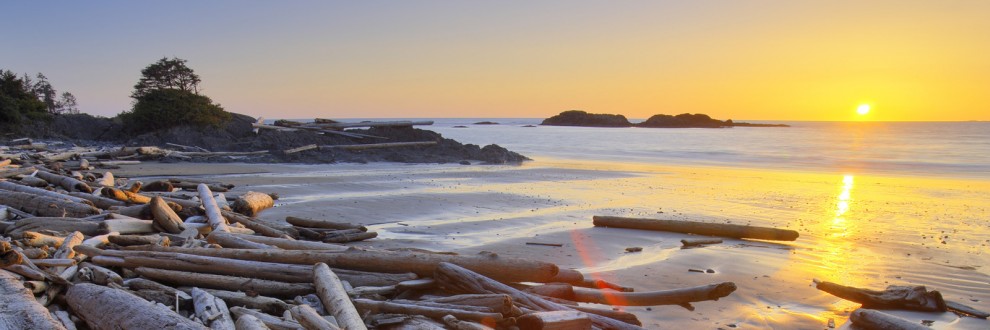I’ve spent the last two days delving into the hidden past of this area, and the controversial history of the Pacific Rim National Park Reserve…
There are the hidden stories of families who, upon establishment of the park, lost their homes, their land, and their ways of life. It’s a sad history that no one talks about.
The other controversial history surrounds Chief Wickaninnish of the Tla-o-qui-aht people, who conquered almost all of the west coast of Vancouver Island in the late 1700’s and early 1800’s. He — and perhaps his son and his son’s son — held control over a vast empire of native peoples from Nootka Sound down almost to Victoria — essentially the whole range of the Nootka (Nuu-chah-nulth) peoples.

He was known as a powerful leader, “the one who comes first [in the canoe]”. Many Europeans traded with him (he created a monopoly amongst the other fur trading native peoples), and fixed prices to a high rate.
There are a few stories of conflicts between Wickaninnish and the Europeans that traded with him, notably the Spanish (Hernandez) and especially the Americans (Thorn). The latter of these two traders is who I am most interested in. The story goes thusly…
In the early 1800s, the Tonquin (a trading ship) was set out on a long trading expedition from the New England states, around South America, and up along the west coast of North America. The Tonquin was commanded by Jonathan Thorn, an experienced Captain who had even once seen naval battles at Tripoli. He went up the west coast and founded Fort Astoria, and continued north to Nootka sound… There, he found an empire, lead by a powerful Chief named Wickaninnish.
One day, Thorn was trading with Wickaninnish, and he was fed-up with negotiations — perhaps with the high price Wickaninnish had set for the high-demand sea otter pelts. Well, in a fit of rage, Thorn took a sea otter pelt and rubbed it in Wickaninnish’s face. Horrendously insulted, Wickaninnish vowed revenge.
The next day a party of his people came to trade with Thorn. Seeing they had no weapons, Thorn must have figured the militant Chief had reconsidered. He let the men carrying their pelts on board the Tonquin. However, something was weird… the Indians weren’t trading. Exasperated, Thorn ordered the anchor to be taken up, and the “Indians to be removed from the ship”. Suddenly, the Indians attacked, pulling out weapons from under the pelts thought to be for trade! Caught totally surprised, the Indians massacred Thorn and all his men. However, one of Thorn’s crew survived, and held a match to the almost 9000 lbs of gunpowder in the Tonquin’s magazine hold, “which, in an instant blew the ship and everyone on board to atoms”! (Chittenden, 1902)(Sherer Mathes, 1979)
A fascinating tale of betrayal and revenge. The history of this place is not as idyllic as the surfers of Tofino make it appear…
Sources:
Eddins, O. (2015). John Jacob Astor – Pacific Fur Company: Astorians – Tonquin – Fort Astoria. TheFurTrapper.com. Accessed May 4, 2015. Available online: [http://www.thefurtrapper.com/astorians.htm].
Gabriel Franchère. (1854). Narrative of a Voyage to the Northwest Coast of America in the Years 1811, 1812, 1813, and 1814. Trans, and ed. J.V . Huntington (1 854), in Early Western Travels, 1 748-1846, e d. Reuben Gold Thwaites ( Cleveland,1 904), V I, 189-409.
Hiram Martin Chittenden. (1902). The American Fur Trade of the Far West. New York, 3 vols. I II, 909-10 [newspaper quotation].
Lamb, W. (2015). Jonathan Thorn in Dictionary of Canadian Biography, vol. 5, University of Toronto/Université Laval, 2003–. Accessed May 4, 2015. Available online: [http://www.biographi.ca/en/bio/thorn_jonathan_5E.html]
Sherer Mathes, V. (1979). Wickaninnish, a Clayoquot Chief, as Recorded by Early Travelers. The Pacific Northwest Quarterly, Vol. 70, No. 3 (Jul., 1979), pp. 110-120. Available online : [http://www.jstor.org/stable/40489855]
